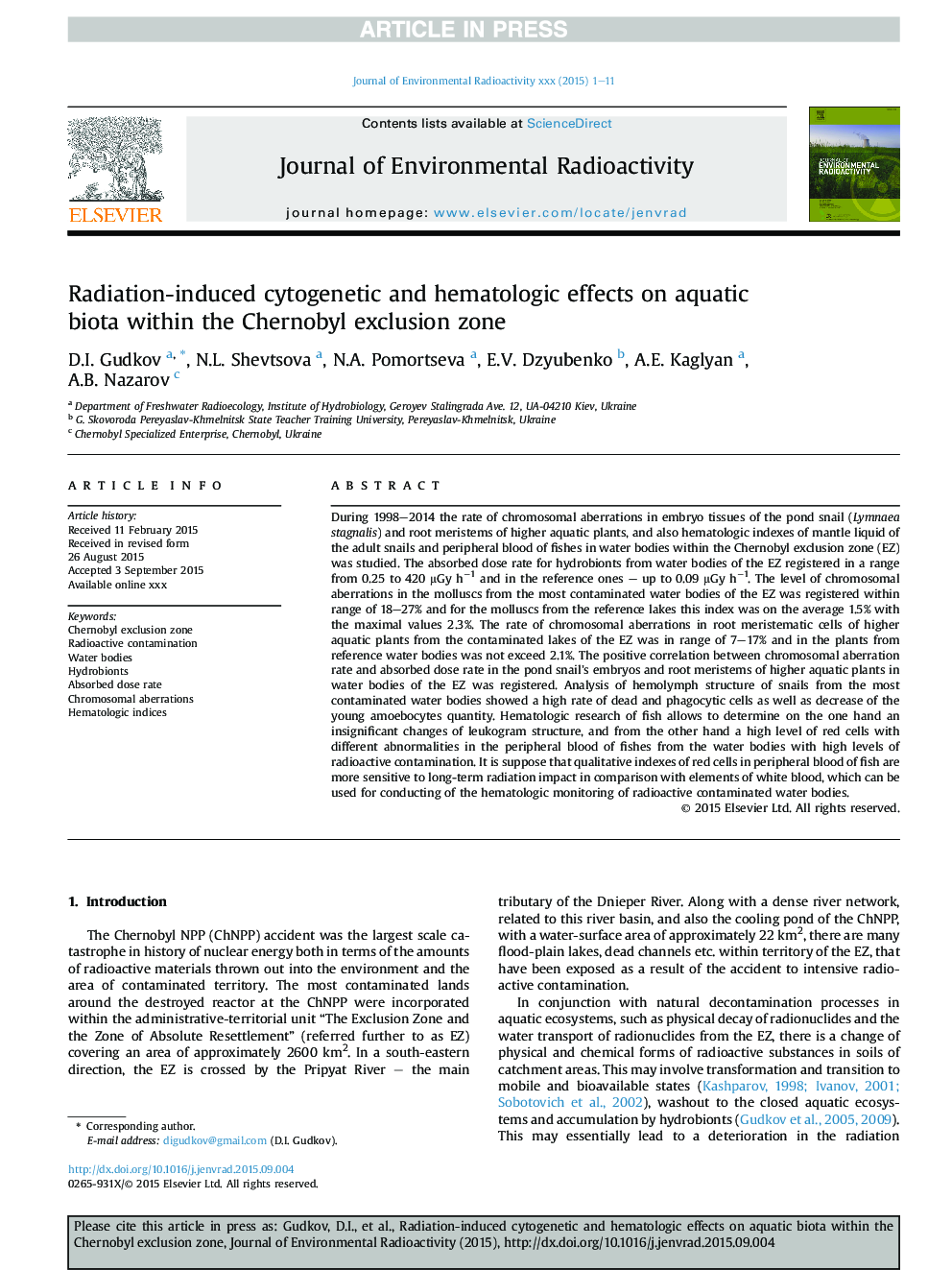| کد مقاله | کد نشریه | سال انتشار | مقاله انگلیسی | نسخه تمام متن |
|---|---|---|---|---|
| 10686673 | 1016748 | 2016 | 11 صفحه PDF | دانلود رایگان |
عنوان انگلیسی مقاله ISI
Radiation-induced cytogenetic and hematologic effects on aquatic biota within the Chernobyl exclusion zone
ترجمه فارسی عنوان
اثرات سیتوژنتیک و هماتولوژیک ناشی از تابش در زیست آبزی درون منطقه محرومیت چرنوبیل
دانلود مقاله + سفارش ترجمه
دانلود مقاله ISI انگلیسی
رایگان برای ایرانیان
کلمات کلیدی
موضوعات مرتبط
مهندسی و علوم پایه
مهندسی انرژی
انرژی هسته ای و مهندسی
چکیده انگلیسی
During 1998-2014 the rate of chromosomal aberrations in embryo tissues of the pond snail (Lymnaea stagnalis) and root meristems of higher aquatic plants, and also hematologic indexes of mantle liquid of the adult snails and peripheral blood of fishes in water bodies within the Chernobyl exclusion zone (EZ) was studied. The absorbed dose rate for hydrobionts from water bodies of the EZ registered in a range from 0.25 to 420 μGy hâ1 and in the reference ones - up to 0.09 μGy hâ1. The level of chromosomal aberrations in the molluscs from the most contaminated water bodies of the EZ was registered within range of 18-27% and for the molluscs from the reference lakes this index was on the average 1.5% with the maximal values 2.3%. The rate of chromosomal aberrations in root meristematic cells of higher aquatic plants from the contaminated lakes of the EZ was in range of 7-17% and in the plants from reference water bodies was not exceed 2.1%. The positive correlation between chromosomal aberration rate and absorbed dose rate in the pond snail's embryos and root meristems of higher aquatic plants in water bodies of the EZ was registered. Analysis of hemolymph structure of snails from the most contaminated water bodies showed a high rate of dead and phagocytic cells as well as decrease of the young amoebocytes quantity. Hematologic research of fish allows to determine on the one hand an insignificant changes of leukogram structure, and from the other hand a high level of red cells with different abnormalities in the peripheral blood of fishes from the water bodies with high levels of radioactive contamination. It is suppose that qualitative indexes of red cells in peripheral blood of fish are more sensitive to long-term radiation impact in comparison with elements of white blood, which can be used for conducting of the hematologic monitoring of radioactive contaminated water bodies.
ناشر
Database: Elsevier - ScienceDirect (ساینس دایرکت)
Journal: Journal of Environmental Radioactivity - Volume 151, Part 2, January 2016, Pages 438-448
Journal: Journal of Environmental Radioactivity - Volume 151, Part 2, January 2016, Pages 438-448
نویسندگان
D.I. Gudkov, N.L. Shevtsova, N.A. Pomortseva, E.V. Dzyubenko, A.E. Kaglyan, A.B. Nazarov,
